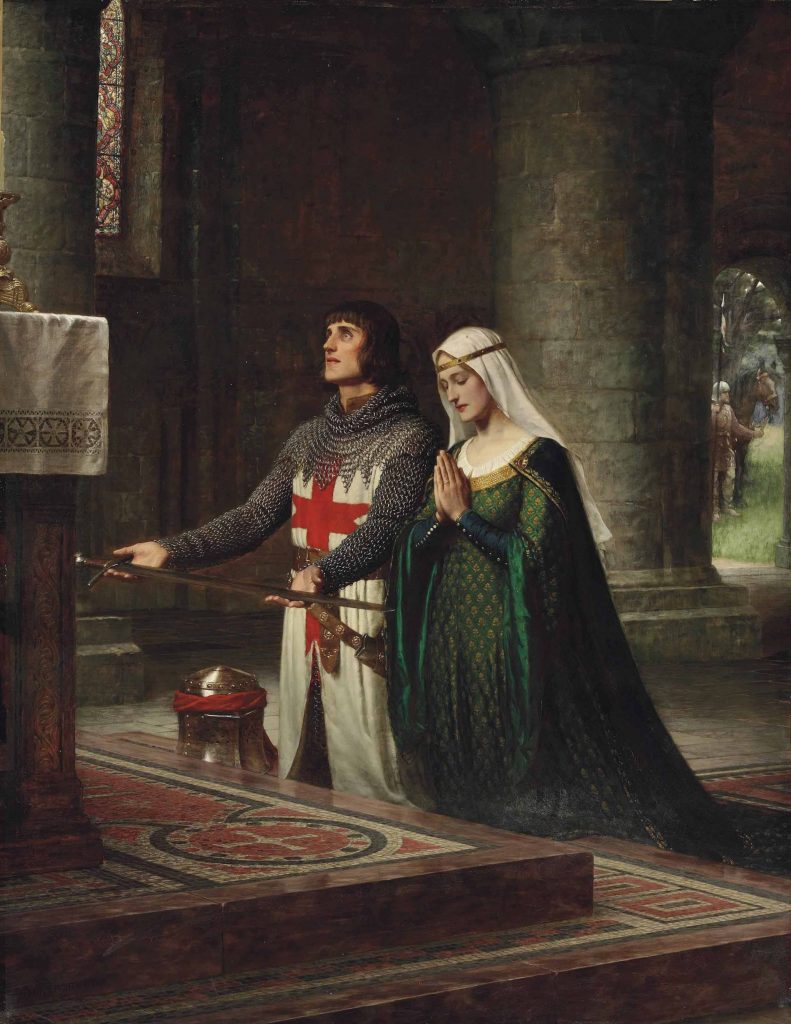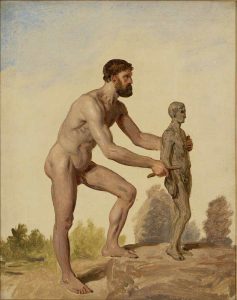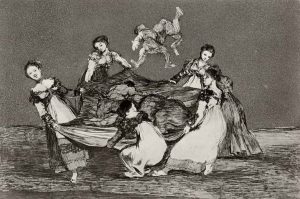In the last posts I wrote, we went through the mythological stories of Greece. From Prometheus and the creation of mankind to the classical heroes and their behaviour. From there we went on to the warrior culture of the Spartans and the moralistic values we could derive from their society. We will be leaving ancient Greece for now and make a leap forward to the Middle Ages, or “Dark Ages” as this period is more commonly known. I will be writing about the code of chivalry that was being implemented by the warrior class of European knights in medieval times. Let’s see if their code of conduct can be applied to the time we live in now.
What does chivalry entail? When most people hear the word chivalry, one of two popular images come to mind: knights in shining armour perched on powerful steeds, or gentlemen opening doors for ladies. They might not understand how chivalry once served as a surprisingly comprehensive ethic; a seamless tapestry of integrated ideals beautifully portrayed in the literature of the high middle ages. This behavioural code was not formulated for women and children or pious clerics, but for elite warriors, hardened knights who considered these moral guidelines more of a privilege than responsibility. With chivalry as their guide, they acted mercifully as well as justly. They defended the weak, served and honoured women and acted courteously towards all. The ethics of chivalry were not imposed from the outside; they were not the result of some law, but a collection of ideals that originated within men themselves. Through chivalry, aspiring knights recognised the importance of being a man of strength, truth and compassion.
Before we dive into the code of chivalry, I think it might be helpful to see how Western society functioned during the Middle Ages. This, I believe, will give us a better insight in how the code of chivalry worked.

The Middle Ages:
The Middle Ages lasted from the 5th to the 15th century, this long stretch of time has been separated in three periods: The Early, High and Late Middle ages. After the fall of the Western Roman Empire, West Europe was overrun by various Germanic tribes. Christianity, which was slowly becoming the major religion during the Roman Empire, continued growing after its fall by converting the pagan tribes to Christianity. Medieval society had a power structure in which the church or clergy was on top, the second tier had all the nobility and rulers and the final tier by far consisted of the biggest percentage of the population; the commoners. These commoners, or serfs, were basically slaves with some freedom. In the second tier you would find a warrior class called the knights. Wealth could be obtained through warfare, so as a knight you had the possibility to strengthen your position through prowess in battle.
Knights and Nobility:
To become a knight you needed a horse, weaponry and armour, and you needed to go off to war to prove your mettle. As a commoner you technically had a chance to rise in station by becoming a knight. But to provide all the necessary equipment and maintain it was expensive.
Through your prowess in battle it was possible that you could rise in rank to become a landowner, these landowning knights became, after generations, more or less the nobles of the later ages. The nobility and warrior classes fluctuated during the years 410 – 1000 AD but became fixed between 1000 and 1300. Some examples of this fixation are the introduction of a coat of arms which only lords or the king could bestow. Having a coat of arms was an indication of being noble. Another thing noblemen did to solidify their claim on the position they held was referencing back to their bloodline. Usually pointing out a hero ancestor that justified their claim. The last thing was patronymics, this became one of the hallmarks of the nobility: if you had a last name you mattered.

When we think of a knight, it is not uncommon to imagine someone wearing plate armour. However, plate armour was not so common as we might expect. Especially in the High Middle Ages most knights either could not afford it or found plate armour too obstructive for their movements, so they wore chainmail shirts instead. Knights always rode horses. Chivalry became synonymous with “the horse warrior”. The costs of being a knight were high, it included the upkeep of your horse and other necessities. Lords bestowed lands to their knights, so they could generate income. To receive this income, knights needed to tax people. More land meant more people and this caused constant war between various lords and knights. Warfare generated income as well in the form of pillaging and looting. In the Late Middle Ages jousting at tournaments became a good way to earn fame and income.
Violence, warfare and the church
Knighthood was a very brutal existence. In the Early Middle Ages, the church had a problem on its hands by the sheer amount of violence it was dealing with. This was caused by the warrior classes who were looking for ways to improve their station and income. The most powerful of these knights were the castelons: the knights who owned castles. They ruled over the population with an iron fist, taking extravagant taxes. To combat this excess of violence, the church attempted to take the warrior ethos out of the idea of a knight and seeking to redirect it far from the concept of a man who was off at war all the time. What the church seeks to do in most cases is to tone down the concept of fighting as the identity of being a knight. They redirect them instead to the concept of love, service, honour and bravery. This way they tried to create soldiers of god instead of soldiers of fortune.

Lacking in coercive power the church made use of rhetoric and appeals for a better life for those who are the warrior classes. Around 989 a peace movement started in the church which resulted in the proclamation called: “The peace and truce of god”, which was an attempt by church counsels in the West to issue edicts as to when knights and nobility were able to fight and whom they were allowed to attack during their wars. One of the edicts was that the defenceless were not to be attacked by anyone of the warrior classes: “Do not fight those who are not able to fight back”. In 1027 some more edicts were added one, of which proclaimed that knights were not allowed to fight on certain holy days and not to fight during certain times of the year. During winter for example. (Waging war during winter caused massive population death due to starvation.)
The code of chivalry
That brings us to the chivalric code, which came into being between 1170 and 1220. All the information that we have comes from just a couple of sources, the authors lived roughly in the same period of time and wrote about knights and their code. When you combine the information from these sources you end up with behavioural rules of conduct. The code of chivalry in its entirety was not written down. A regulation in the chivalric code includes taking an oath of loyalty to the lord and perceiving the rules of warfare. It was taught by knights to their squires, and taught through stories that exemplified the virtues that were regarded important, all these virtues were invented and shaped by the poets and writers who were connected to the church itself. King Arthur and the knights of the round table is the most well-known example of one such stories. The code of chivalry demanded that the knight defended the weak, be merciful to ones enemies, generous, compassionate, honest and courteous, especially to women, and to live in the defence of the good – all encompassed by a sense of justice, loyalty, humility, and brotherhood among the knightly caste.
In the 19th century, hundreds of years after the time of medieval chivalry, Leon Gautier wrote a book about chivalry. In this book he set out the following ten commandments of chivalry based on the information he took from historic sources:
- Thou shalt believe all that the Church teaches and thou shalt observe all its directions.
- Thou shalt defend the Church.
- Thou shalt respect all weaknesses, and shalt constitute thyself the defender of them.
- Thou shalt love the country in which thou wast born.
- Thou shalt not recoil before thine enemy.
- Thou shalt make war against the infidel without cessation and without mercy.
- Thou shalt perform scrupulously thy feudal duties, if they be not contrary to the laws of God.
- Thou shalt never lie, and shalt remain faithful to thy pledged word.
- Thou shalt be generous, and give largesse to everyone.
- Thou shalt be everywhere and always the champion of the right and the good against injustice and evil

As you see the code is very strongly intertwined with and in favour of the church. It is important to note this, because the Bible and its notion of good and evil has been the basis. During the Middle Ages I believe this chivalric code, combined with the knowledge gained from the Bible, pushed knights to become more noble than the violent men in search of plunder they used to be. The code was perfect for the Middle Ages but it is not possible to implement it in our lives today without adjusting it accordingly.
I am not religious, I have not been brought up with a religion, and I believe that through science and the theory of evolution set out by Charles Darwin it can be proven that there has not been a God who created us. The Bible is a book of fiction with some dangerously old-fashioned notions, so we should be very careful when we use the Bible to teach us about morality. Even though I agree with some commandments of the chivalric code, the parts about the church and the killing of infidels is useless. While researching this subject I came across a contemporary book about chivalry and how its edicts might be adapted to fit our modern society. The book is called “Chivalry Now”, written by D. Joseph Jacques. His adapted code has the following commandments.
1. I will develop my life for the greater good.
2. I will place character above riches, and concern for others above personal wealth.
3. I will never boast, but cherish humility instead.
4. I will speak the truth at all times, and forever keep my word.
5. I will defend those who cannot defend themselves.
6. I will honour and respect women, and refute sexism in all its guises.
7. I will uphold justice by being fair to all.
8. I will be faithful in love and loyal in friendship.
9. I will abhor scandal and gossip – neither partake or delight in them.
10. I will be generous to the poor and to those who need help.
11. I will forgive when asked, that my own mistakes be forgiven.
12. I will live my life with courtesy and honour from this day forward.
Today, the popular concept of chivalry has been reduced to the courtesies toward women which we consider those of a gentleman. Opening doors for women, giving up seats, helping to carry their packages, speaking to them politely, treating them with care. Chivalry could be a lot more than this, it could be a guiding hand to help you in developing your character. Self-development is more than learning facts and honing skills. It involves character building as well, but there are barriers and distractions that interfere with the development of character. The lure of riches, obsession with money, the urge to accumulate power or material possessions. As a society it is time we grow up. We have to take away the glamour of doing what is wrong. We have to stop rewarding anti-social behaviour. We have to develop a culture that is more humane. As a people we need the moral integrity to withdraw our support of what is wrong, no matter how passive it is. We need to morally refuse to profit from anything that hurts people. Thanks to technology and a globalized population, the kind of greed that we once got away with is no longer acceptable and could lead to our extinction. The chivalrous heart knows that there are things worth fighting for. Through the warrior spirit we can discover an intensity for a life filled with energy and readiness to act when needed. A desire to perfect oneself for the benefit of others. A determination to protect one’s family, neighbourhood, nation and world. Being true to yourself and others. Honesty, loyalty, integrity. Fairness and the willingness to stand up for what is right. A sense of duty that is greater than one’s own needs.

For more about the code of chivalry and the Middle ages I recommend the following:
Perceval, Chretien de troyes
Ordene de Chevalerie, Anonymous author
The knight and chivalry, Richard barber
A knights own book of chivalry, Geoffroi de chamy,
knights, in history and legend, Constance bouchard,
Chivalry now, the code of male ethics. D. Joseph Jacques.






1 thought on “Chivalry”
Awesome post! Keep up the great work! 🙂